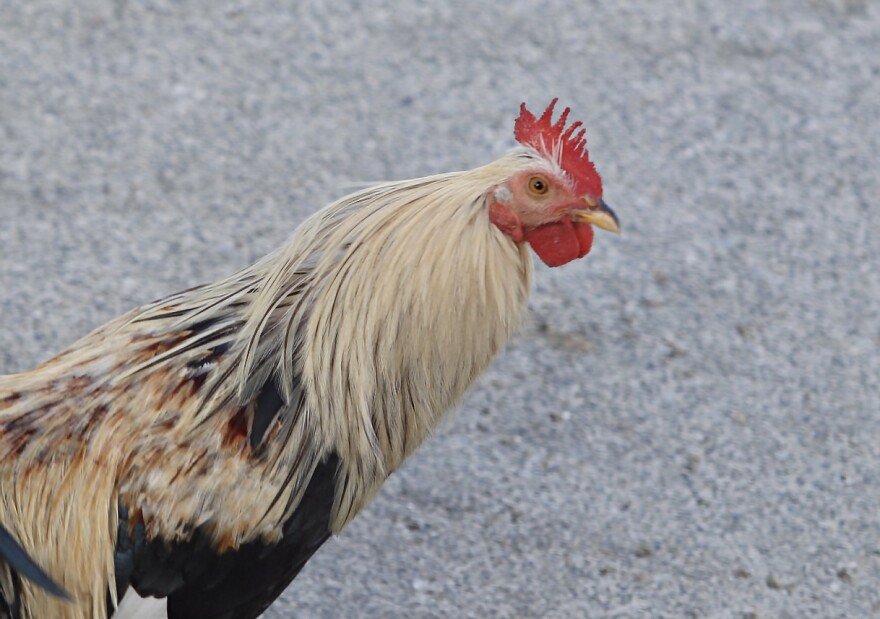By John Lovett
University of Arkansas System Division of Agriculture
Arkansas Agricultural Experiment Station
FAYETTEVILLE, Ark. — A novel probiotic has been developed as a direct-fed microbial in both poultry and swine feed to improve gut health and weight-gain efficiency. Additionally, feed cost savings may be realized through greater utilization of soybean meal in diets.
NEW PROBIOTIC — A probiotic made from a Bacillus strain isolated by poultry science researchers was found to also be beneficial for swine gut health. (U of A System Division of Agriculture photo)
The probiotic, which is a beneficial bacterium, is made from a Bacillus-strain isolated by poultry science researchers with the Arkansas Agricultural Experiment Station and is being co-developed by KENT Nutrition Group.
KENT licensed the patented technology from the University of Arkansas System Division of Agriculture and is currently making probiotic-infused poultry and swine feed with the Bacillus strain. The experiment station is the research arm of the Division of Agriculture.
“We are grateful for our second novel technology collaboration with UADA,” said Kale Causemaker, senior director of sales and business development for Innovative Solutions, a division of KENT. “These discoveries help improve animal agriculture sustainability and welfare. We are excited and optimistic to have this probiotic commercially available for producers in 2025.”
Bacillus-strain advantages
Advantages of a Bacillus-strain probiotic, compared to common probiotic microorganism of the Lactobacillus and Bifidobacterium species, include its ability to survive higher temperatures and lower pH environments.
The non-genetically modified Bacillus bacterium also eliminates the need for multiple genetically modified enzymes that are added to animal feeds to help the animal break down ingredients in protein sources such as soybean meal.
Being heat- and pH-stable improves survivability rate in the animal’s gastrointestinal tract and feed processing such as the manufacture of pelleted feed. The strain was originally found to work well in poultry diets and preliminary data suggest the probiotic may also work well in swine.
Overcoming a problem
Billy Hargis, distinguished professor of poultry science, said experiment station studies on the Bacillus strain showed it increased the animals’ ability to digest non-starch polysaccharides in protein sources such as soybean meal. Hargis is also director of the John Kirkpatrick Skeels Poultry Health Laboratory for the experiment station, the research arm of the Division of Agriculture.
Non-starch polysaccharides are difficult-to-digest carbohydrates found in soybean meal, which serves as the primary source of protein for both layer and broiler chickens, as well as turkeys and swine, Hargis explained.
“The problem with these non-starch polysaccharides is that they cannot be digested and utilized by the animal, but rather they feed detrimental populations of microbes within the gut, adding to intestinal inflammation and susceptibility to other causes of enteric disease,” Hargis said.
The strain of Bacillus by KENT was isolated by former post-doctoral researcher Kyle Teague under the co-advisement of Hargis and Samuel Rochell. Teague is now the director of poultry nutrition at Life Products, Inc., in Nebraska, and Rochell is now an associate professor of poultry nutrition at Auburn University.
From lab to market
The Division of Agriculture’s Technology Commercialization Office, or TCO, shepherded the Bacillus-strain’s patent-pending status and commercial licensing to KENT.
“Translating research to commercial products is the name of the game,” said Parker Cole, associate director of TCO. “We always enjoy working with industry and have enjoyed working with KENT. They’ve been a great partner to work with and collaborate with, so we’re excited to see these products go into the marketplace.”
Earlier this year, Innovative Solutions also released EFFICOR, an L. plantarum probiotic for swine that was developed in conjunction with Division of Agriculture researchers. Research trials showed EFFICOR helped improve body weight gain and feed efficiency in growing and finishing pigs, with nearly $2 per pig cost savings because of improved efficiencies at the time of the trials, Cole said. The foundational research for EFFICOR came from Jiangchao Zhao, former professor of animal science for the Division of Agriculture.
“Our office sits at the interface of academic innovation and commercialization,” said Cole. “Being able to take a technology that was developed here, work with industry, confirm that it works in a particular product or formulation, and have that company excited about it to where they want to license it and implement it in their portfolio, I think that speaks to the research quality and to the inventors that we have within the Division of Agriculture.”
To learn more about the Division of Agriculture research, visit the Arkansas Agricultural Experiment Station website. Follow us on X at @ArkAgResearch, subscribe to the Food, Farms and Forests podcast and sign up for our monthly newsletter, the Arkansas Agricultural Research Report. To learn more about the Division of Agriculture, visit uada.edu. Follow us on X at @AgInArk. To learn about extension programs in Arkansas, contact your local Cooperative Extension Service agent or visit uaex.uada.edu.

















